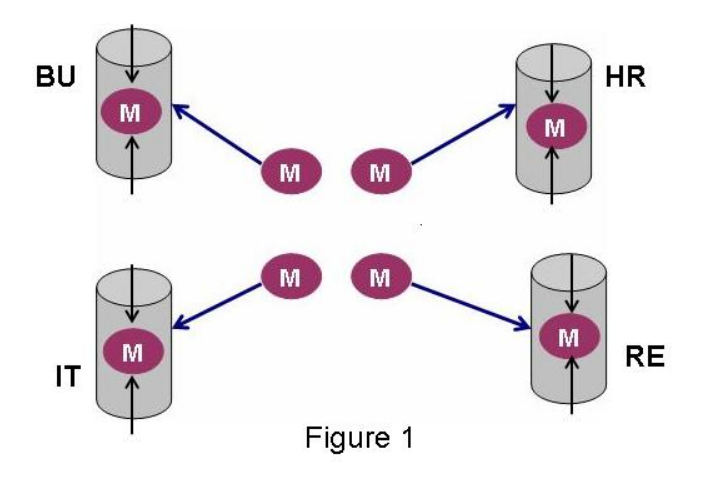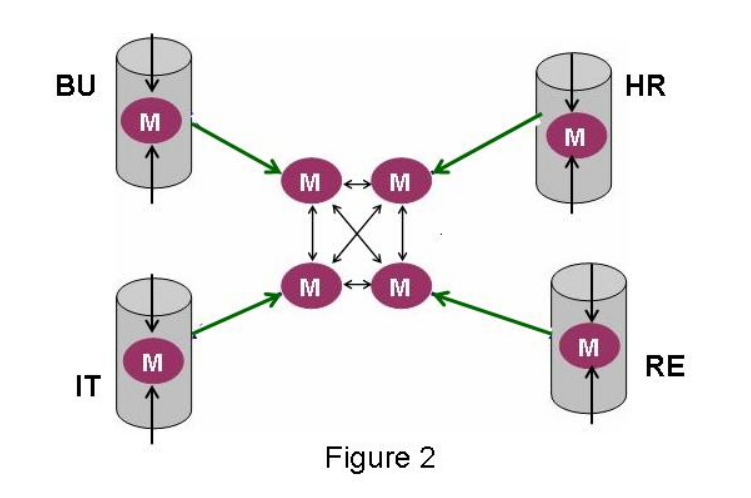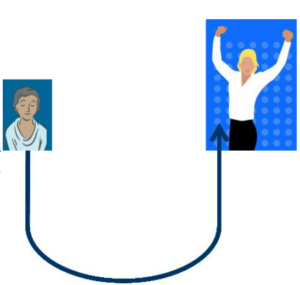Workplace Collaboration
Worklife and Workplace Issues Fall Between the Organizational Cracks
Workplace issues touch many functions of the organization causing the responsibility for addressing them to be widely dispersed. For example:
- Business Unit managers are typically too stretched with immediate priorities to focus on initiating corporate-wide integration to achieve shared goals.
- Strategic Human Resource functions related to quality of work life are outsourced in many organizations, severely limiting the ability of these organizations to get their arms around workplace strategy and policy.
- The Information Technology function at best sees itself as a supporter, but not shaper, of workplace strategy.
- Frequently, Corporate Real Estate officers have neither the skills nor the positional power to consider the linkages between organizational policies, practices and workplace.
- Internal Facilities staffs and their design consultants can exercise significant impact on initial designs but their influence ceases at project completion. Their priorities are driven by quantifiable measures such as cost and schedule.
- Corporate Strategic Planning, where it exists, typically has not seen workplace issues as a priority.
- Organizational Development staffs and consultants generate excitement for change and futuristic visions. In the absence of a widely accepted plans and clear responsibilities for implementation, the output easily ends up as shelfware in the press of short term priorities.
- CEO’s are in a unique position to see across the functional silos but have little bandwidth to focus on workplace issues that are so critical to employee attraction, retention, productivity and creativity.
As the nature of work and job requirements continually change, people adapt their processes and work styles as best they can to the physical environment they have inherited. The conditions of a place are often accepted as a given and ignored in the rush of activity. This makes it all the more difficult to advocate for the need to do better because people seem to be coping. What is key are the productivity improvements that could result if policies, practices, and physical spaces weren’t continually imposing limits and being “worked around.” Workplace needs to be an enabler rather than an inhibitor of job performance.
Everyone concerned with the organization’s viability and effectiveness should be play a role in the quality of the workplace. But workplace issues are system-wide and no single function or position has the mandate to address them as a whole. Potential solutions, critical to organizational success, are falling through the cracks.
Our Solution: Cross-functional Dialogue
The cross-functional nature of the problem also suggests a solutions: integrate managers across functions. The very nature of organizational systems disperses and separates managers of different business lines and functions from one another. They continually juggle the demands of the organizational leaders with the needs and expectations of their staffs. This leaves them with very little time, energy or inclination to develop their own strategic thinking and to partner with their peers across functional boundaries to accomplish more than they could do alone. These managers see different parts of the “elephant” without any of them seeing the whole. This is called “middle dispersion”1 [see figure 1].

The problem managers face in getting together around workplace issues are complicated by the fact that their superiors are usually unaware of the forces separating them and, therefore, they don’t see the need to drive integrative processes.
We propose a series of conversations to bring the right people from business units and functions together to:
o contribute their unique perspective
o develop an awareness of the problems and their implications
o explore potential responses
o develop recommendations
o collect data throughout the organization
o communicate proposals in a way that garners input and support
o participate in the implementation of the robust solutions
These conversations maximize the learning that comes from dispersion by creating a setting for integration. [See figure 2]

The Process: Implementing Solutions
A high performance, cross-functional team will be carefully selected to tackle worklife and workplace challenges in the organization. Cross functional integration depends on mid-level managers and individual contributors working well together. Senior leaders begin the conversation and energize it at various points by making important decisions and allocating resources, but it’s the directors and managers who have to reach out of their functional silos to each other to share information, test ideas, report on result, and offer a different perspective.
Through a series of conversations, the team will:
- Frame conceptual inputs representing various perspectives within the organization.
- Gather insights from recognized data sources and external authorities.
- Develop case studies of successful and in-process workplace experiments either within the organization or in similar organizations.
- Design research to analyze specific organizational conditions and needs, e.g., generating hypotheses regarding work solutions.
- Test and validate interventions with high leverage potential through implementation of pilot projects.
- Scale lessons from pilots into broader interventions and specific organizational change initiatives.
- Codify insights into organizational memory and learning, i.e., creating organizational knowledge
No matter how good an initial set of ideas might be, conditions are constantly changing. An organization’s strategy must stay current by monitoring actions in light of inevitable dynamic evolution. New technologies, for example, will affect the status quo and sometimes make it obsolete. Competitor actions and reactions will create the need for continuous assessment.
We establish a conversation between organizational decision-makers and opinion leaders that will build upon initial actions. Once the dialog has been convened, we will establish a forum and a process to anticipate change, prepare appropriate responses, and to be able to implement effective solutions in a timely, effective manner. We can train in-house staff to facilitate this conversation.
The Benefits:
Enhanced Organizational Effectiveness
Taking a cross functional approach to worklife and workplace will result in:
- A whole systems approach that incorporates multiple perspectives
- Respectful engagement of disparate views resulting in higher levels of teamwork and better solutions
- Enhanced support for work processes
- More knowledge sharing leading to increased knowledge and more rapid innovation
- Better, more timely decisions
- Satisfied, effective employees
- Competitive advantage in the attraction and retention of critically skilled employees

The Value Proposition: What Art of the Future Brings to the Party
- A structured and creative approach to futures analysis
- Structural Dynamics to identify the enduring inter-relationships between key functions
- Appreciative inquiry skills to create awareness of the value each contributor brings to the process
- Dialog facilitation and conversational analysis to focus on the real issues
- Organizational learning expertise that turns information into knowledge
- Experience in building management support for workplace innovation
- Ability to influence senior management
- Executive coaching
[1] Middle Dispersion / Integration is based on the thinking of Barry Oshry
